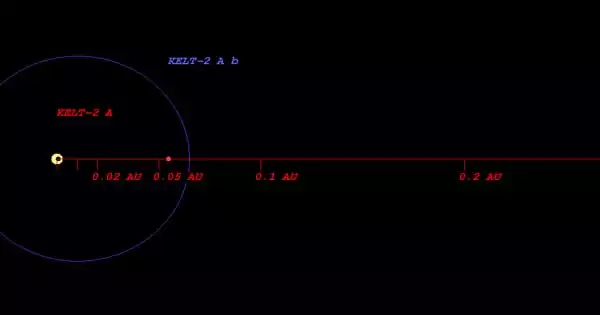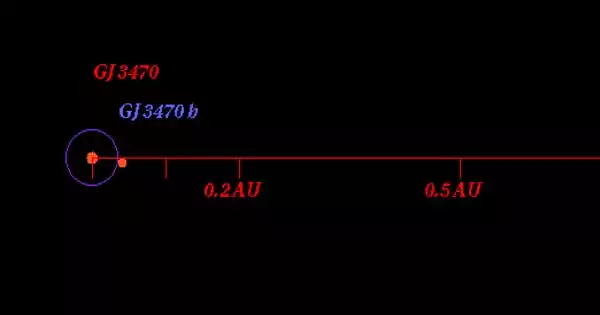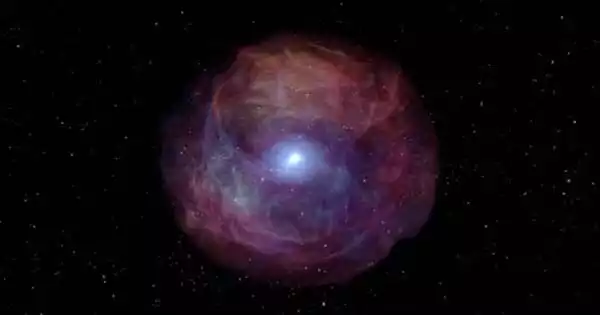A new mysterious galaxy system has been found as part of the DESI Legacy Imaging Surveys, according to an international team of astronomers. A pair of galaxies and an extensive, highly collimated tail of gas and stars make up the newly discovered system. The finding was reported May 2 on the arXiv pre-print server.
Galactic tails could be a symptom of an act or process that changes galaxies. Thus, the identification and investigation of these traits may contribute to our understanding of the formation and development of galaxies.
Currently, a team of astronomers under the direction of Dennis Zaritsky of the University of Arizona in Tucson, Arizona, has found a brand-new remarkable galactic tail with a number of intriguing traits. The tail is associated with a binary galaxy system.
First, the researchers serendipitously detected a new edge-on S0/a galaxy that received designation PGC 1000273, during a search for low surface brightness (LSB) galaxies. Due to its morphology, PGC 1000273 was dubbed the “Kite” galaxy and the observations found that it is located some 610 million light years away.
Furthermore, a companion galaxy to Kite was identified about 186,000 light years away from it. The companion, designated PGC 070409, or Mrk 0926, is an active galaxy with an active galactic nucleus (AGN) at its center.
We propose that the tail resulted from a three-body interaction from which the lowest-mass galaxy was ejected at high velocity…. The resulting hyperbolic orbit explains the linearity of the debris field and the tail’s narrowness.
The researchers
A tiny galaxy known as “Kite A,” which lacks signs of active star formation, is located within the Kite-Mrk 0926 and has a lengthy galactic tail made up of stars and gas.
“We present the discovery of an extraordinary tail emanating from what we have dubbed the Kite galaxy,” the researchers wrote in the paper.
The tail was discovered to have a length to breadth ratio of 40 with a projected length of roughly 1,240 light years. The photos demonstrate that the location angle of all the detected emission knots along the tail scatters by less than 3 degrees.
As a result, the newfound tail stands out as an exceptional example of a galactic tail due to its length, narrowness, and linearity. The longest optical galactic tail to date discovered is the Kite’s tail. Only a few radio-detected head-tail systems with lengths of more than 2,000 light years are the longest known galactic formations.
The Kite’s tail is unusual because, while coming from a S0/a galaxy, which is supposed to be gas-poor, it has enough gas to allow star formation over its entire length. The tail also resides in a low-density galactic environment, away from any clusters or groups, but within a system of two galaxies that are close to one another and both of which are known to have AGNs.
The authors of the research came to the conclusion that the most likely explanation for the detection of an extended tail is a three-body encounter between the Kite, Mrk 0926, and Kite A that caused the rapid ejection of the smallest galaxy.
“We propose that the tail resulted from a three-body interaction from which the lowest-mass galaxy was ejected at high velocity…. The resulting hyperbolic orbit explains the linearity of the debris field and the tail’s narrowness,” the researchers concluded.
















